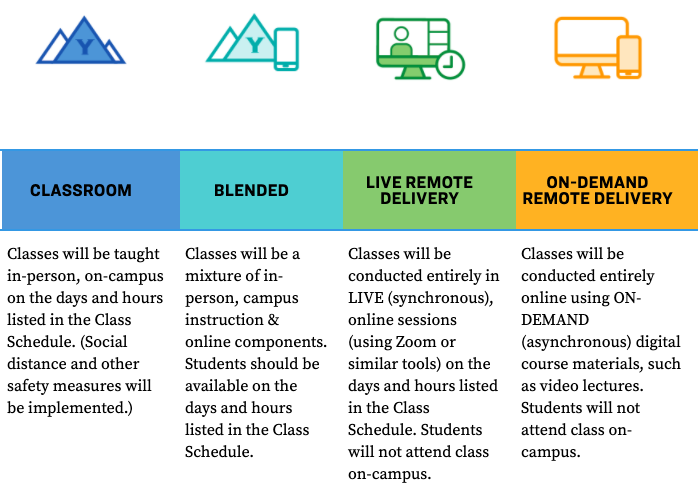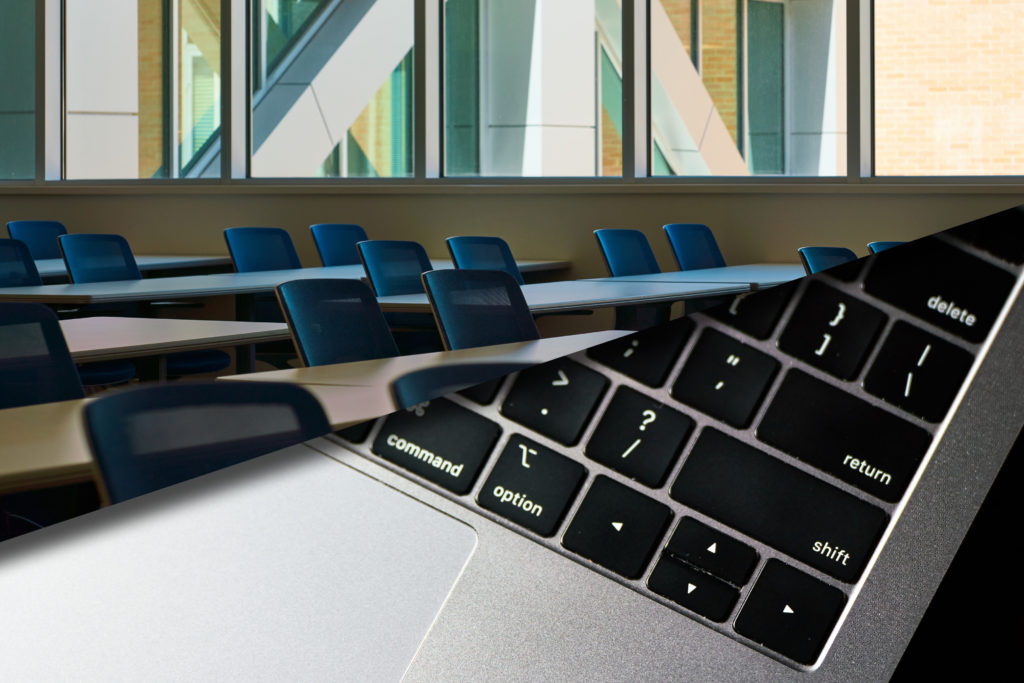See also: ‘I still have my doubts’: What some BYU professors think about returning to campus this fall
BYU professors and departments have taken a variety of factors into consideration as they make decisions about which teaching methods — classroom, blended, live remote delivery, or on-demand remote delivery — will best meet student and faculty needs.
These factors include the expected number of students taking the class, the need for laboratory work and personal experience and preference for online classes.

The challenge of lab learning
Neil Hansen, professor of plant and wildlife science and the program’s department chair, is teaching two classes in the fall using different delivery methods.
He is teaching a soil science course using the on-demand remote delivery method because it’s required for a lot of different majors, and he feels like the on-demand method will be most accommodating for the number of students taking the class.
Professor Bryan Hopkins is going to teach the lab section of soil science in the blended method. Hansen and Hopkins work together on both courses to create a coordinated experience.
“We really can’t provide a very good experience to students doing those (the labs) remotely,” Hansen said. The lab involves hands-on learning and students need to access equipment in the lab, but there are some activities that they will be able to do online before they come to the lab, Hansen said.
According to Hansen, if a student who is a part of the lab class gets sick, he and Hopkins will be accommodating. “If nothing else, we will find ways to create comparable at-home activities.”
Hansen is also teaching a careers in environmental science course, which he chose to teach in the live remote delivery method because he feels course is a crowdsourced learning course and interactivity is a huge help to accomplish the learning objectives for the course.
School of Family Life professor Dana Adcock is teaching three different courses this fall in a variety of different delivery methods. Adcock said the school reached out to her and asked her which method she would be comfortable using. Because she didn’t have any underlying health concerns, she wanted to teach in-person classes when possible.
Adcock will be teaching food preparation in the home and family meal management using the blended method as well as advanced food preparation using the traditional classroom method.
LeeAnn Bitner is also teaching food preparation in the home, but she will be teaching all of her sections using the on-demand remote delivery method. Bitner said there are two other teachers who are both teaching the course in the blended method, which can’t accommodate as many students because of social distancing measures. “With me staying online, we felt we could put more students through the class,” she said.

Melissa Gibbs, the broadcast news lab manager in the School of Communications, said this semester will be tricky for the broadcast sequence because of all the hands-on things students do in the broadcast lab. There are four courses that are a part of the lab, these courses will have lectures that are mostly live remote delivery and the lab sections will be partially in-person and partially remote to accommodate social distancing measures.
Instead of having 20 students in the lab at a time, the lab has reduced it by half to only allow 10 students at a time. The other 10 will be doing their lab work remotely from home. Every week the groups will switch so they are getting both in-lab experience and remote lab experience.
“We’ll be facing a lot of challenges this semester, but hopefully it will be a plan that will still allow the students to learn the things they need to,” Gibbs said.
Choosing campus for community
Humanities professor Carl Sederholm teaches an American horror class as well as an American studies class. He was given the option of which delivery method to teach in, and he chose the classroom method for both classes.
He said his classes are fairly small and are able to meet in a big classroom while following social distancing guidelines, and he feels that his classes are highly interactive and doesn’t think he could personally provide the same interactive experience over Zoom. “I also really want to foster that sense of the BYU community,” Sederholm said.
Although Sederholm feels more comfortable teaching in the classroom setting, he said if a student in his class were to get sick, he would move to remote class to ensure safety among everyone else.
“I am actively making backup plans,” he said. “Everything is changing so fast with this that I may have to do everything over Zoom and I’m willing to do that.”
Traditionally large classrooms
American Heritage 100, a popular class that counts for a GE requirement, will get a makeover Fall Semester, according to course coordinator Kristen Betts.
Previously there were six lecture hours taught by two teachers, each of them teaching three lectures. Kelly Patterson and Christopher Karpowitz were assigned to teach the course this fall, and they decided to team-teach for the first time ever. Now, the lecture will be live remote delivery on Mondays and Wednesdays at 11 a.m. (with another option for seniors who need the course to graduate and cannot make the 11 a.m. lecture time work) and there are 101 lab sections with a mix of in-person and remote labs in addition to the lecture.
“Our intent is to have students have as close to a similar experience in both of those kinds of labs,” Betts said, “But it’s really hard.” Betts said the department is working on training the TAs this summer so that the labs will be as similar as possible, whether online or in person.
Betts said the class is set up as live remote delivery instead of on-demand because the faculty are determined to provide an engaging lecture while still having student involvement. The live remote delivery format allows students to send in questions, answer polls and be involved in various ways.
According to STATS 121 course manager and professor Lynne Nielsen, the statistics department was expecting at least 1,600 students to register for the principles of statistics in fall and decided it was best to offer the class as on-demand remote delivery because there’s already an online section of the course that was developed in 2018.
Nielsen is the only professor teaching the principles of statistics course this fall. She didn’t have a choice of what method to teach in, she just got the task of implementing the department’s decision.
Nutrition and dietetics professor Stephanie Parker said all sections of the essentials of human nutrition are being taught remotely. Because there are usually 240 students per section and based on the classrooms used for the course, it was determined that six-foot social distancing would be impossible to accommodate all the students, even with a rotating or hybrid model.
The decision was directed by the university, but individual teachers were able to choose whether to teach in live remote delivery or on-demand remote delivery. Seven sections are being offered on campus this fall — two of them being on-demand remote delivery and the other five being live remote delivery.
“I chose live remote as opposed to on-demand because I’m hoping to create as much of a typical classroom feel as possible,” Parker said. “I love interacting with the students, hearing their questions and being able to respond to them right away.”
Nutrition, dietetics and food science professor Sarah Bellini is teaching one of the on-demand remote delivery sections of essentials of human nutrition. This was not a big change for Bellini because she has been teaching the course online since 2015.
“Some students like the set schedule offered through live remote delivery,” Bellini said. “Others like the flexibility of on-demand remote delivery. Certain learning styles thrive in different environments better than others.”
Bellini’s department chair, Merrill Christensen, is also teaching the class but chose the live remote delivery method. “I had experience with that during the second half of Winter Semester, which gives me something to build on,” Christensen said.
He said he chose live remote delivery because he is afraid students who choose to take the on-demand remote delivery classes will procrastinate watching the lectures and fall behind in the class.
See also: ‘I still have my doubts’: What some BYU professors think about returning to campus this fall




